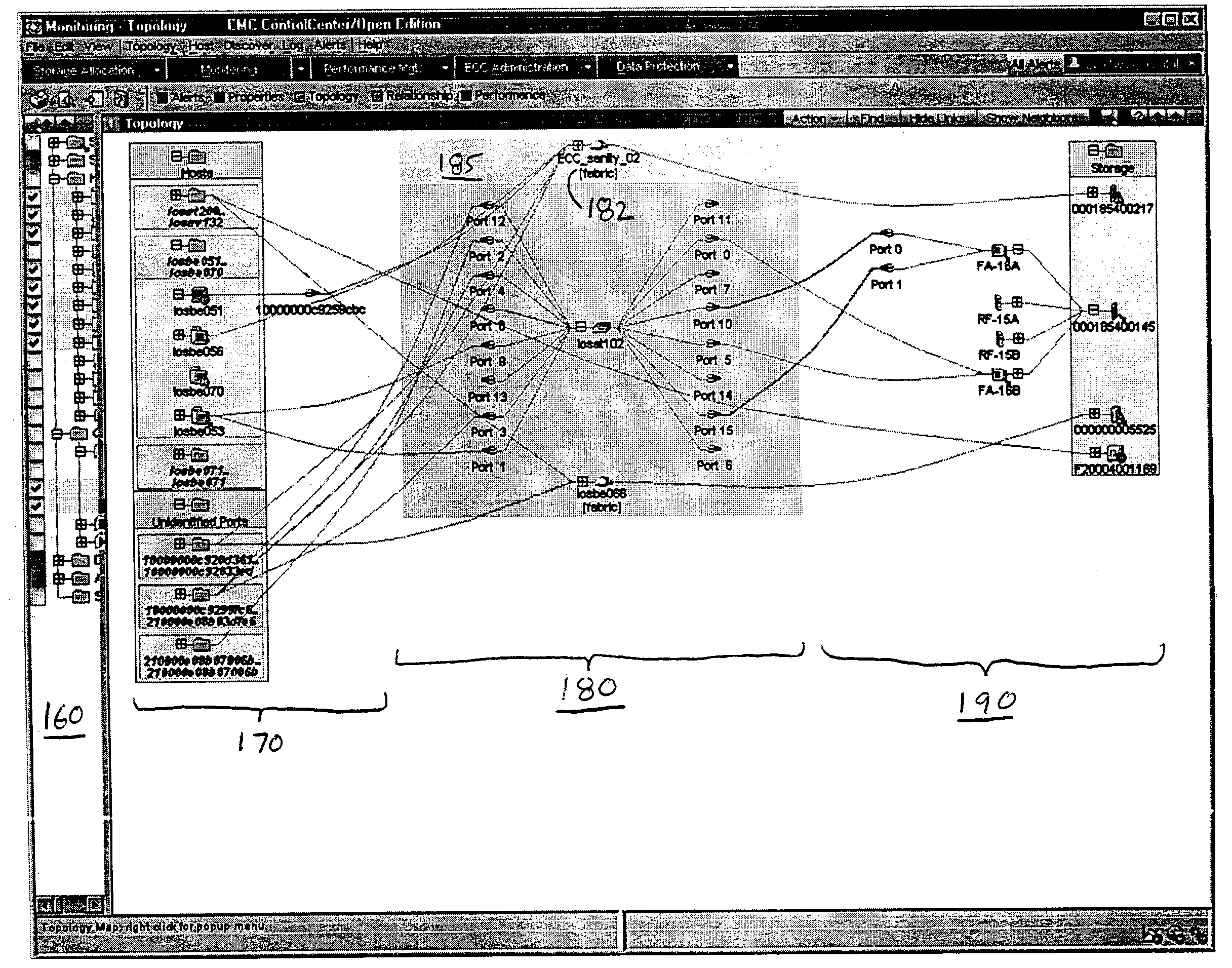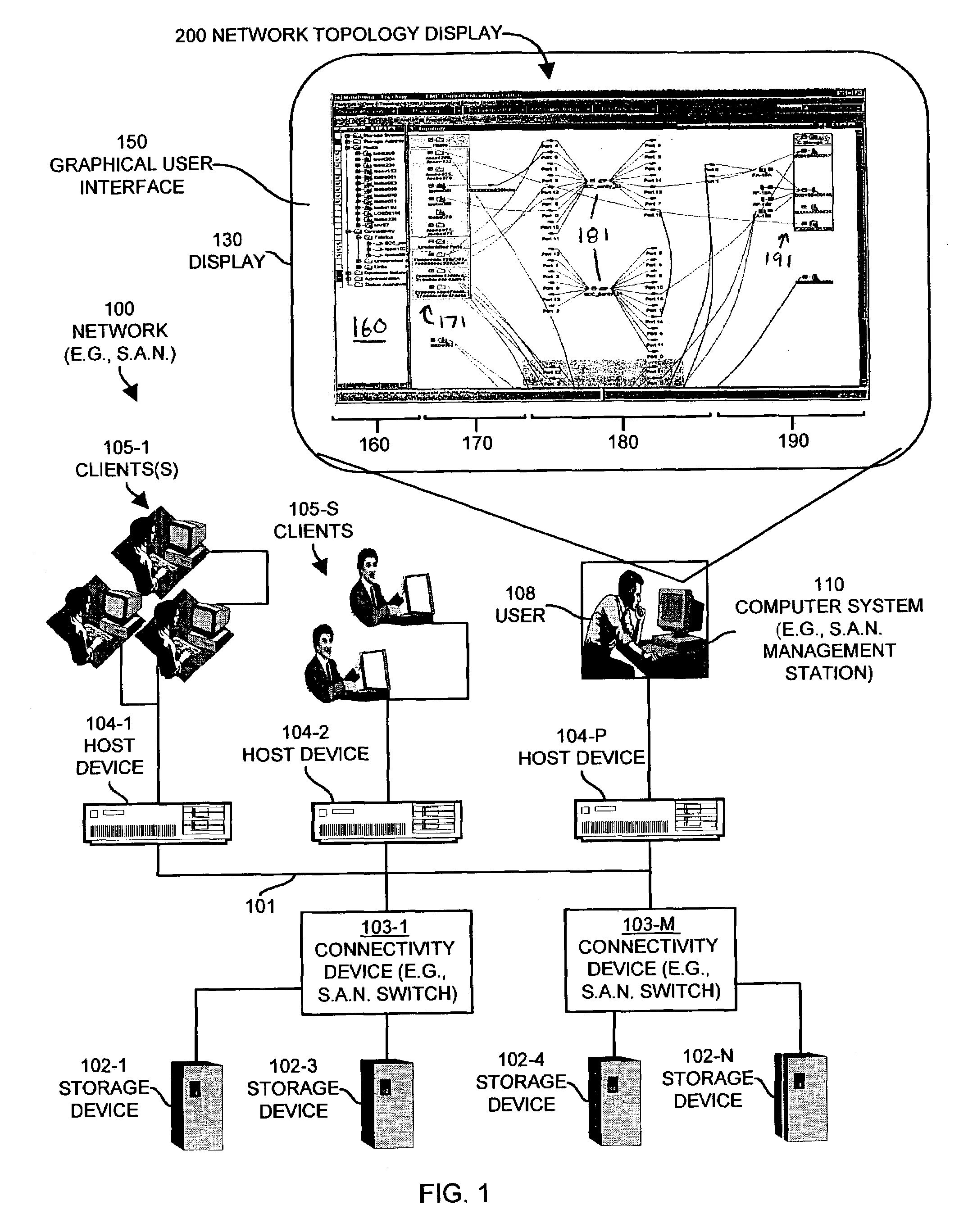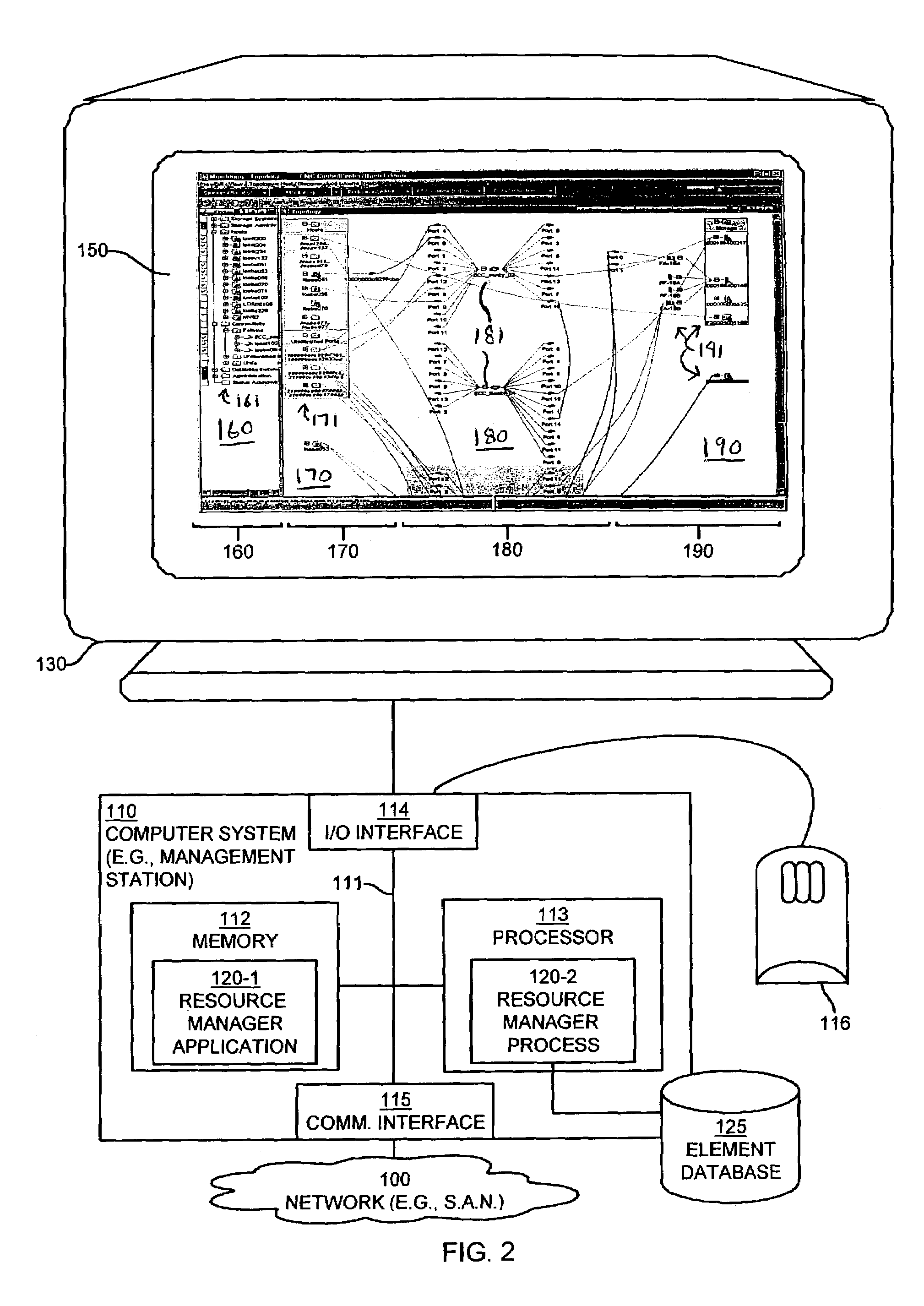[0013]Embodiments of the invention further operate to display the coupling condition, for example as a graphical line or link on the display of the computerized device, between the connectivity element and either or both of the host element and the storage element to which that coupling condition relates in order to visually convey the coupling condition to a user viewing the network topology view. In other words, embodiments of the invention can determine coupling conditions between managed network resources and can then visually display or represent these coupling conditions, for example, as graphical lines drawn or otherwise rendered within the network topology view between the displayed host, connectivity and storage elements displayed within the respective display areas. Since the host display area is separated from the storage display area by the connectivity display area, this
processing creates the effect of displaying data communications links between displayed elements from one display area (e.g., a host element representing a host computerized device in the host display area) to another display area (e.g., a connectivity element representing a switch in a connectivity display area). Since elements of each type (e.g., host, connectivity and storage) are maintained in respective areas, the user can quickly determine, for example, which icons correspond to host related devices, switch or connectivity device, storage devices and so forth.
[0016]Further still, since the user may select managed resources to be included or excluded from the network topology view and the embodiments of the invention always add or remove these resources from the respective display areas according to the selected resource type, the user does not have to visually hunt through the network topology view in an attempt to locate a resource that has been selected for viewing within the network topology view. Rather, since embodiments of the invention provide the respective display areas broken down into different resource types (e.g., host display area, connectivity display area, storage display area), the user will intuitively know where to look to further invoke management operations on a resource that is selected by that user to be included within the network topology view.
[0017]In addition to the aforementioned embodiments of the invention, other embodiments of the invention provide refinements and additional features based upon the aforementioned network topology view framework. As an example, a user is able to operate embodiments of the invention to create user-defined groups of managed resources and is then able to expand and collapse these groups within the network topology view. Embodiments of the invention further provide various unique
group control mechanisms that allow for ease of use to expand and collapse groups and to add and remove a particular resource or resources from a particular group.
[0018]Further still, other embodiments of the invention provide automatic alignment of elements within the network topology view as a user adds or removes resources into or out of the view or when a user expands a particular resource in a view to see managed resource elements related to that particular resource. In particular, certain embodiments of the invention include a concept of parent-child relationships between elements displayed within the network topology view. As an example, consider a host computerized device that includes a number of host
bus adapter devices that each contains a set of respective data communications ports. Embodiments of the invention may represent or render a host element in the host display area to represent the host computerized device as a top-level or parent element. The user may select this top level host element for expansion in order to view child elements related to this host element where and each child elements represents one of the host
bus adapter cards within that host
computer device. Further still, the user may decide to select one of the host
bus adapter child elements in order to further expand this element within the network topology view in order to view the child port elements of the host bus adapter element that correspond to individual port devices within the host bus adapter in that host computerized device. During such user expansion operations (and collapsing operations that condense elements into their parent elements), embodiments of the invention provide automatic alignment of all of these host related devices within the host display area in order to visually convey the parent child relationships thus allowing the user to readily ascertain what child elements are child elements of which parent elements.
[0020]In addition, embodiments of the invention can further display zone coupling conditions between each displayed zone elements in a format that differentiates the zone coupling conditions from non zone coupling conditions. As an example, links in the view that couple elements in the same zone may be highlighted, may
change color, or may flash or change to a different line type (e.g., bold, dotted, etc.). This allows a user to quickly determine zone configuration between host elements displayed in a host display area, connectivity elements displayed in the connectivity display area and storage elements displayed in the storage display area.
[0021]Other embodiments of the invention include a computerized device, such as a host computerized device,
workstation or other computerized device configured to process all of the aforementioned method operations disclosed herein as embodiments of the invention to provide a network topology view and associated
resource management operations. In such embodiments, the computerized device includes a display, a memory system, a processor and an
interconnection mechanism connecting the display, the processor and the memory system. The memory system is encoded with a
resource management application that when performed on the processor, produces a resource
management process that includes a graphical
user interface produced on the display of the computerized device. The graphical user interface allows the resource
management process to perform all of the method embodiments and operations explained herein as embodiment of the invention.
 Login to View More
Login to View More  Login to View More
Login to View More 


